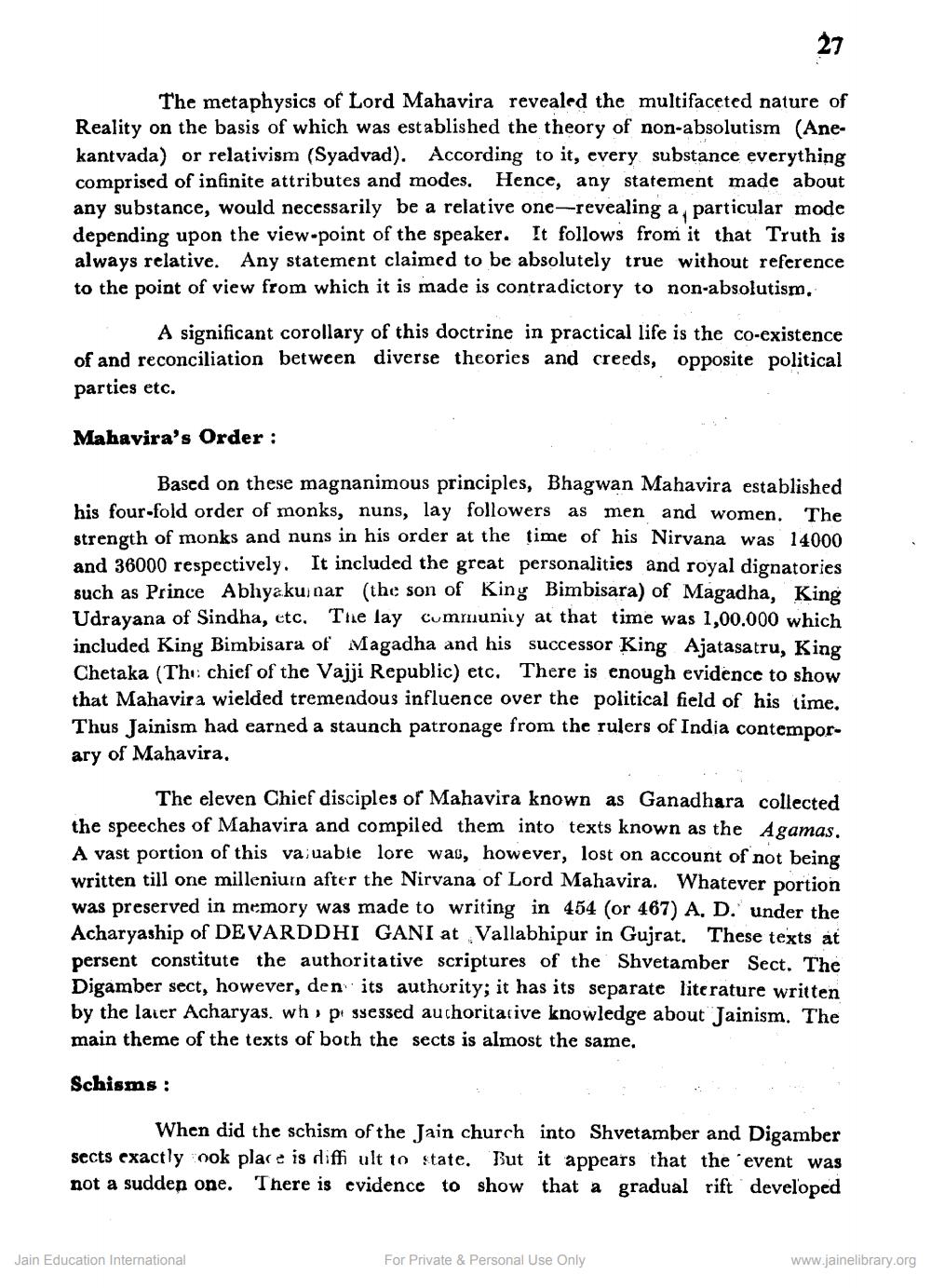________________
The metaphysics of Lord Mahavira revealed the multifaceted nature of Reality on the basis of which was established the theory of non-absolutism (Anekantvada) or relativism (Syadvad). According to it, every substance everything comprised of infinite attributes and modes. Hence, any statement made about any substance, would necessarily be a relative one-revealing a, particular mode depending upon the view point of the speaker. It follows from it that Truth is always relative. Any statement claimed to be absolutely true without reference to the point of view from which it is made is contradictory to non-absolutism.
A significant corollary of this doctrine in practical life is the co-existence of and reconciliation between diverse theories and creeds, opposite political parties etc.
Mahavira's Order :
Based on these magnanimous principles, Bhagwan Mahavira established his four-fold order of monks, nuns, lay followers as men and women. The strength of monks and nuns in his order at the time of his Nirvana was 14000 and 36000 respectively. It included the great personalities and royal dignatories such as Prince Abhyaku nar (the son of King Bimbisara) of Magadha, King Udrayana of Sindha, etc. The lay Cummunity at that time was 1,00.000 which included King Bimbisara of Magadha and his successor King Ajatasatru, King Chetaka (The chief of the Vajji Republic) etc. There is enough evidence to show that Mahavira wielded tremendous influence over the political field of his time. Thus Jainism had earned a staunch patronage from the rulers of India contemporary of Mahavira,
The eleven Chief disciples of Mahavira known as Ganadhara collected the speeches of Mahavira and compiled them into texts known as the Agamas. A vast portion of this va uable lore was, however, lost on account of not being written till one milleniurn after the Nirvana of Lord Mahavira. Whatever portion was preserved in memory was made to writing in 454 (or 467) A. D. under the Acharyaship of DEVARDDHI GANI at Vallabhipur in Gujrat. These texts at persent constitute the authoritative scriptures of the Shvetamber Sect. The Digamber sect, however, den its authority; it has its separate literature written by the later Acharyas. whp ssessed authoritative knowledge about Jainism. The main theme of the texts of both the sects is almost the same.
Schisms :
When did the schism of the Jain church into Shvetamber and Digamber sects exactly ook place is diffi ult to state. But it appears that the event was not a sudden one. There is evidence to show that a gradual rift developed
Jain Education International
For Private & Personal Use Only
www.jainelibrary.org




